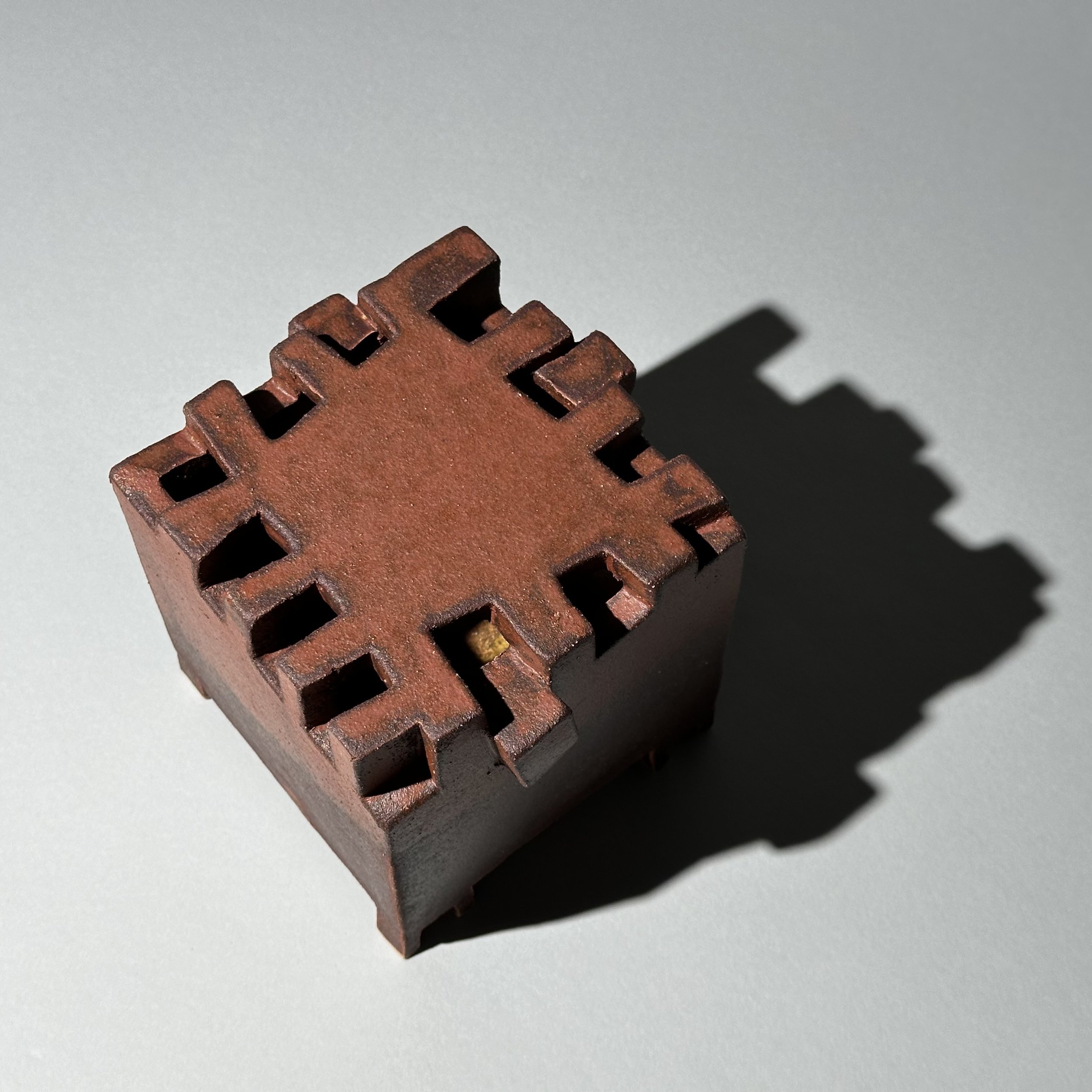 Image 1 of 10
Image 1 of 10

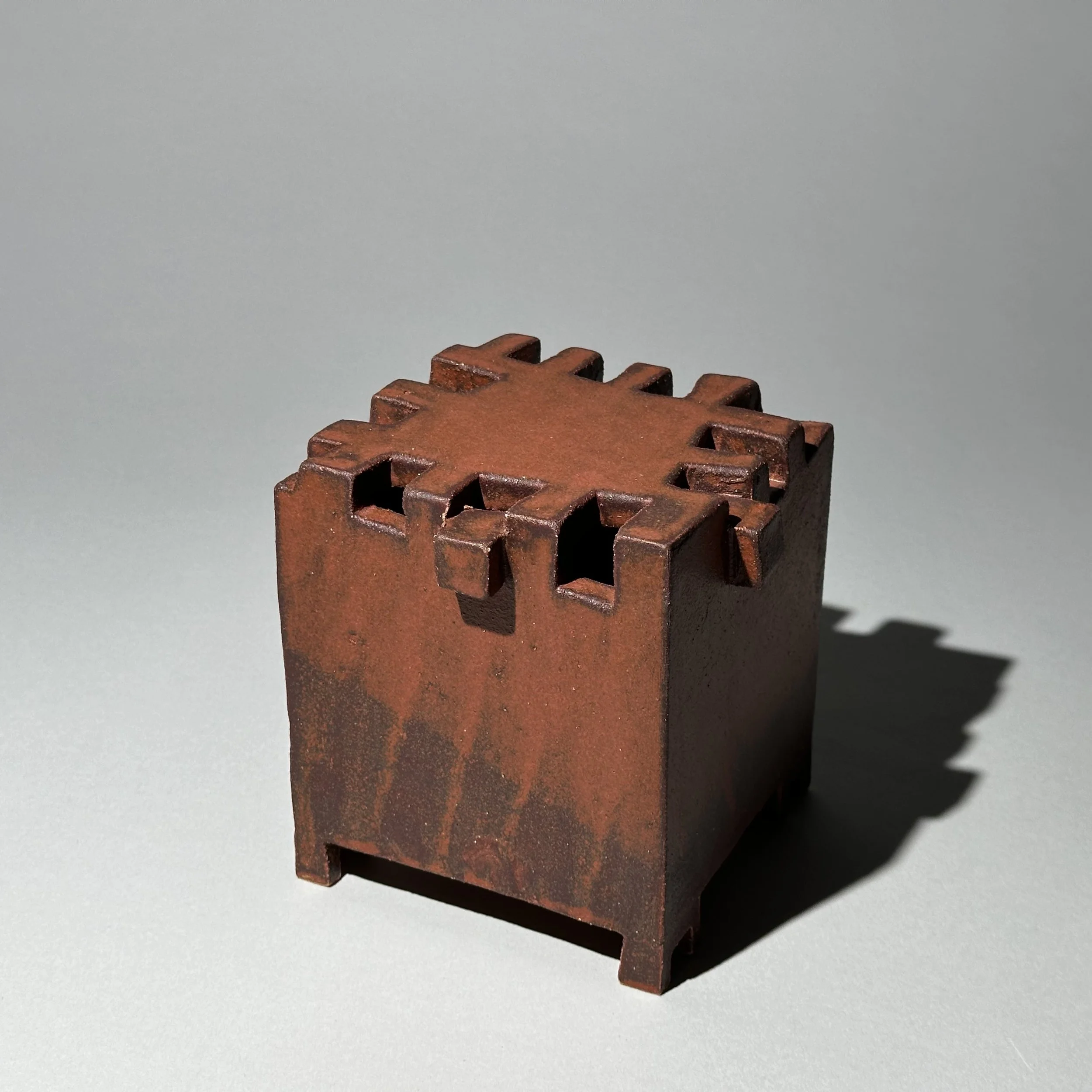 Image 2 of 10
Image 2 of 10

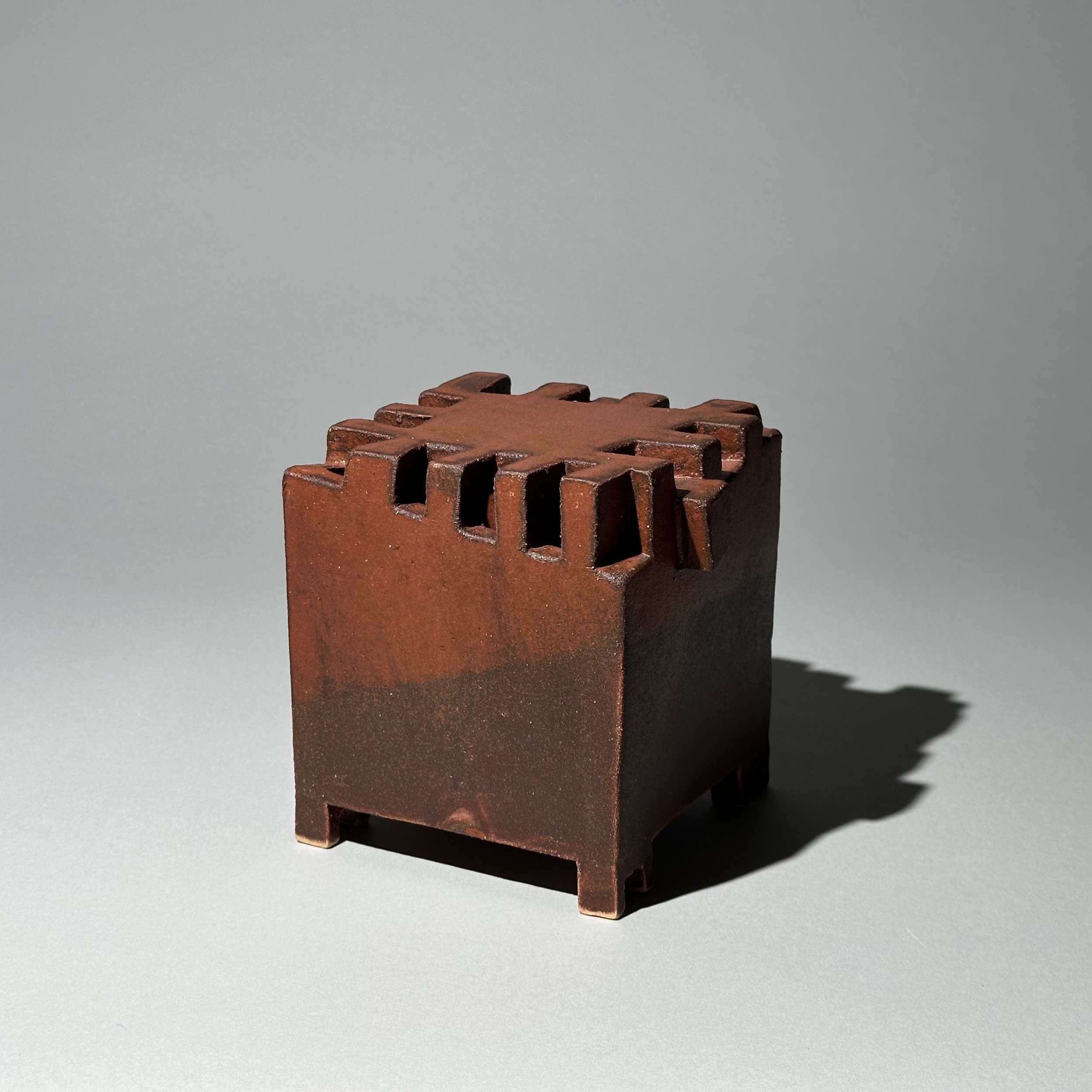 Image 3 of 10
Image 3 of 10

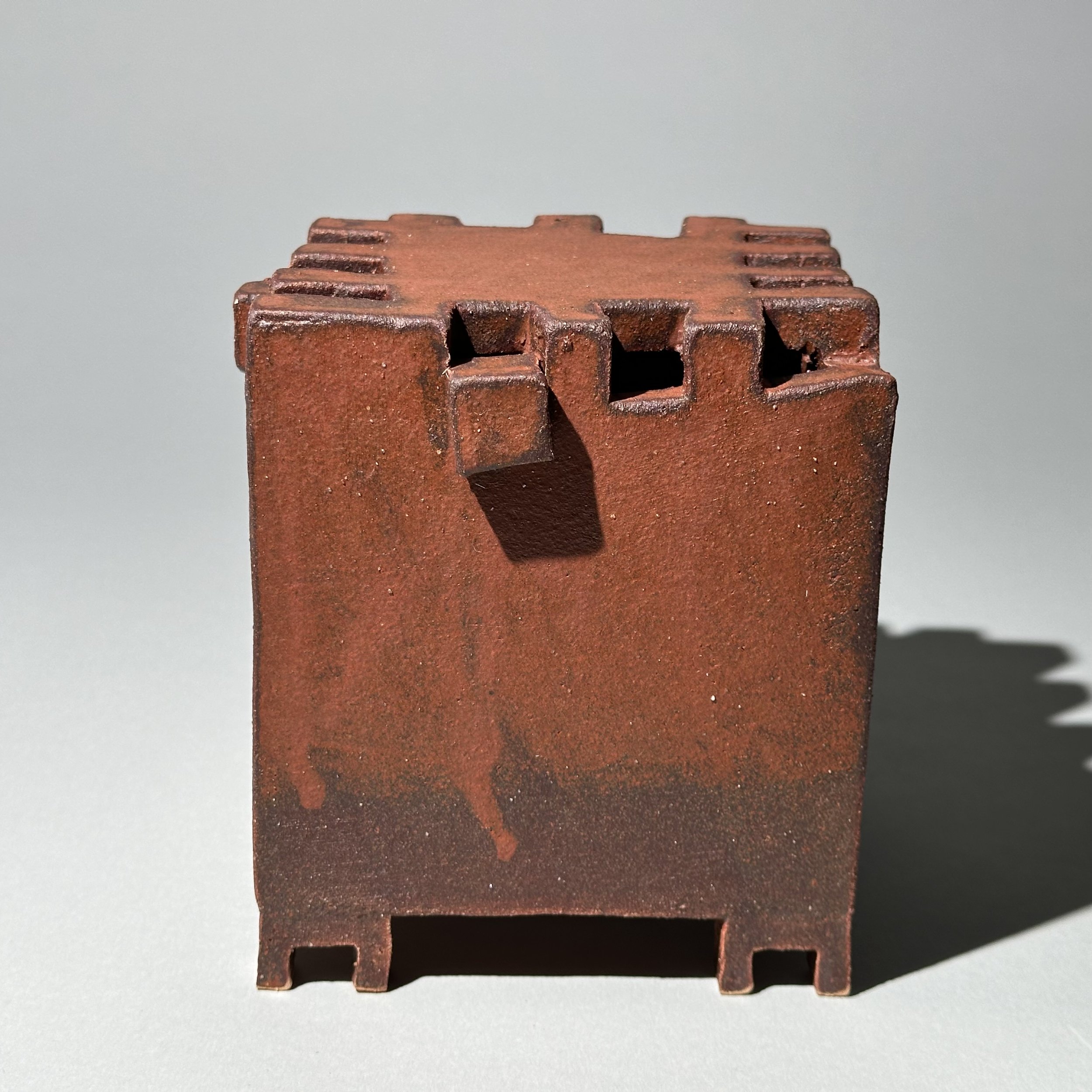 Image 4 of 10
Image 4 of 10

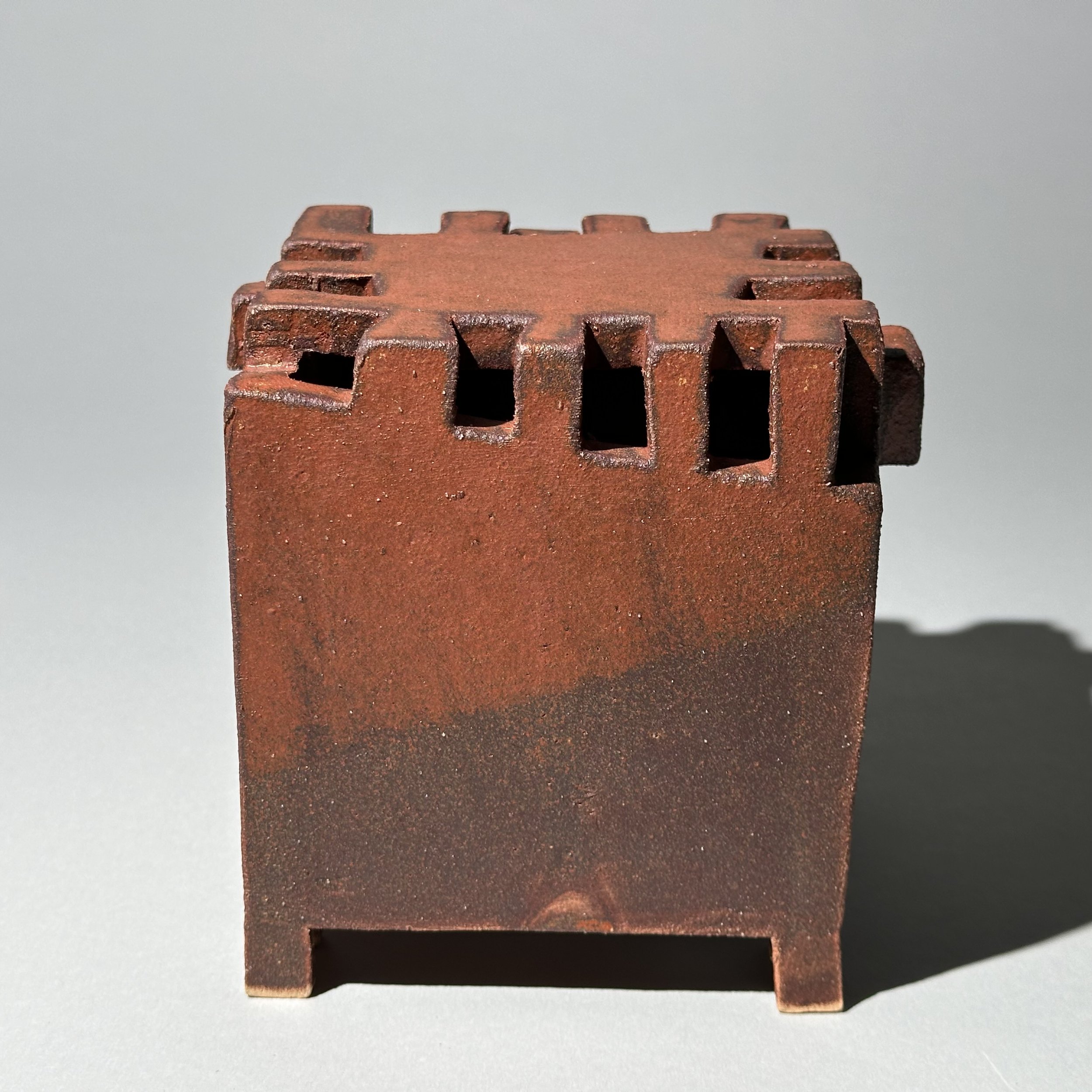 Image 5 of 10
Image 5 of 10

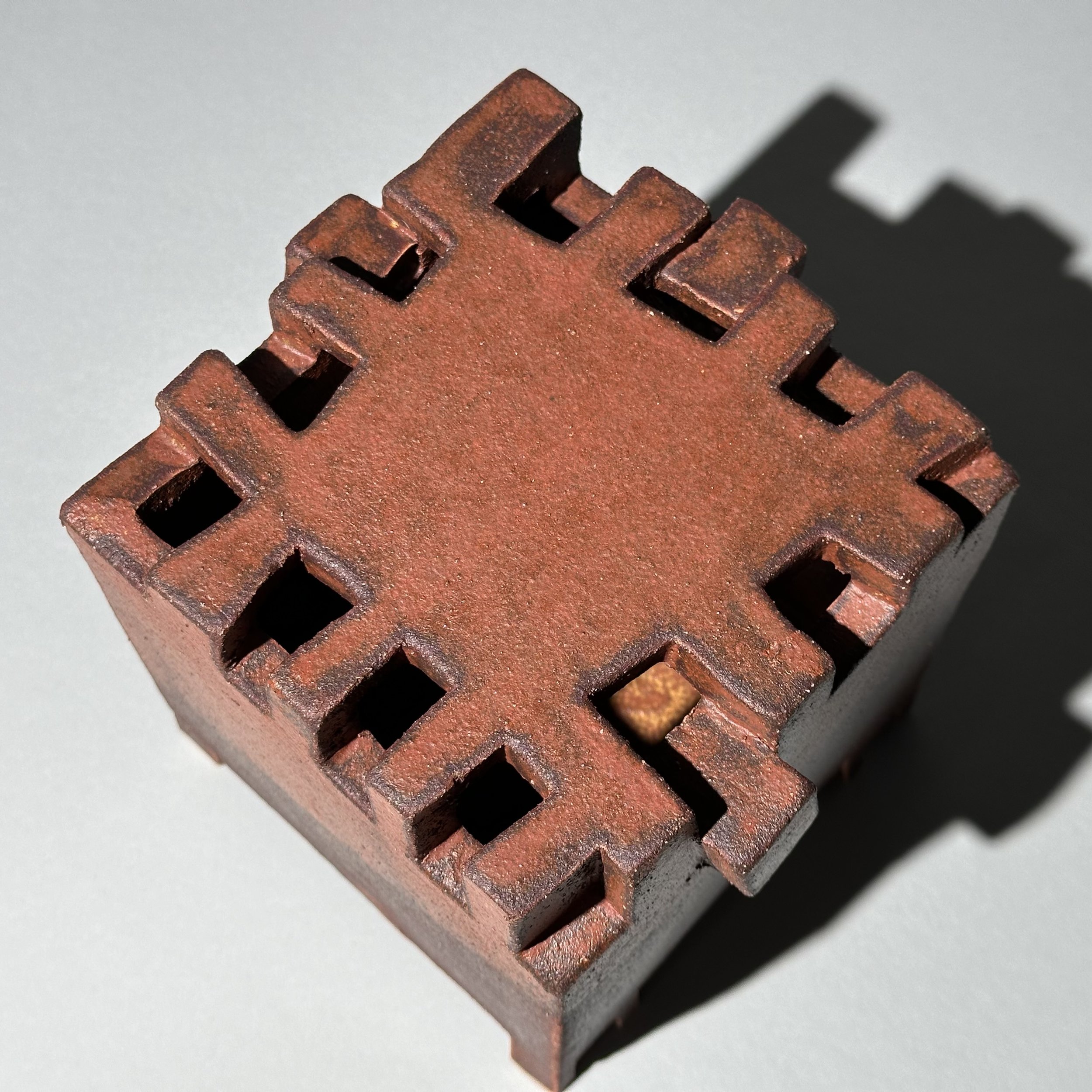 Image 6 of 10
Image 6 of 10

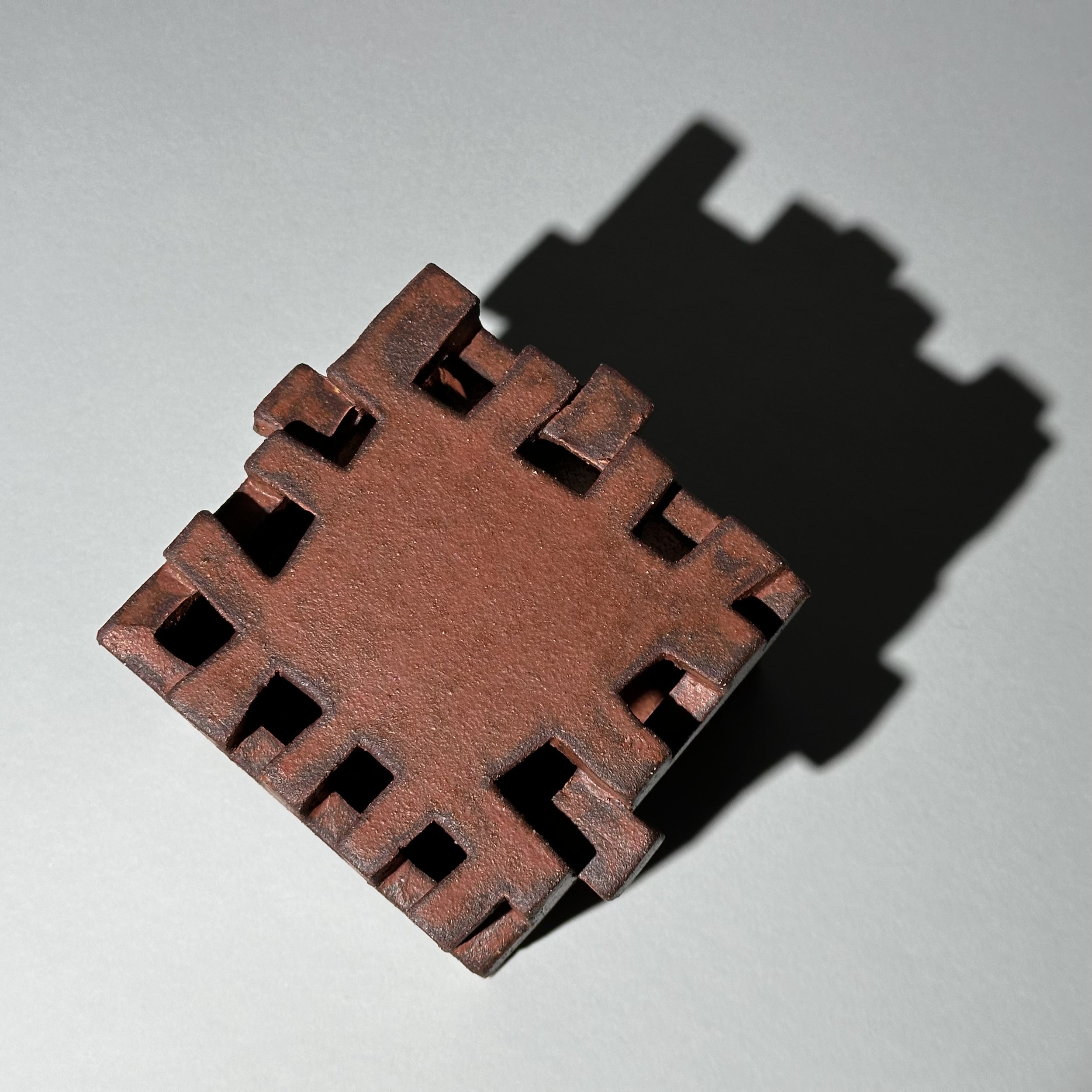 Image 7 of 10
Image 7 of 10

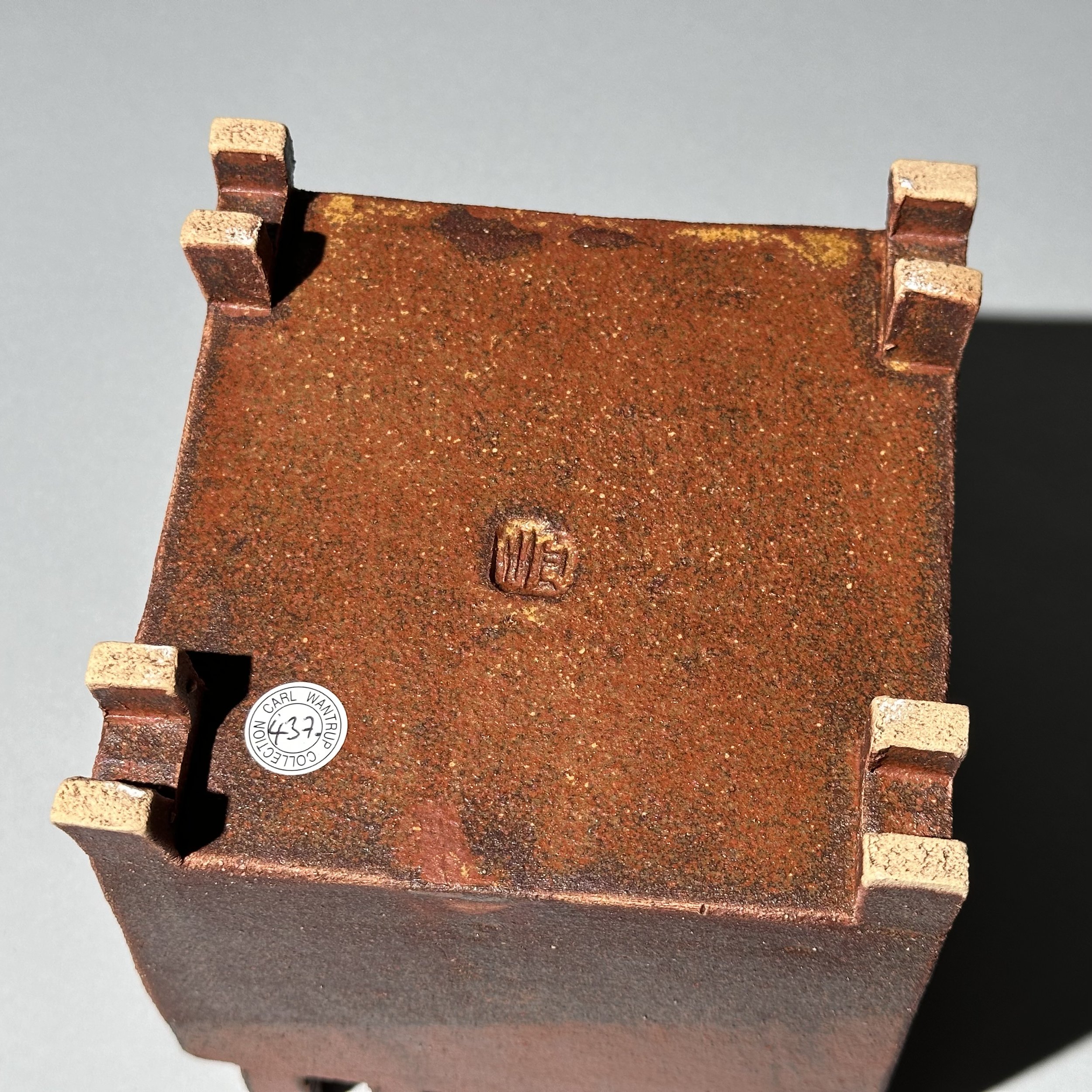 Image 8 of 10
Image 8 of 10

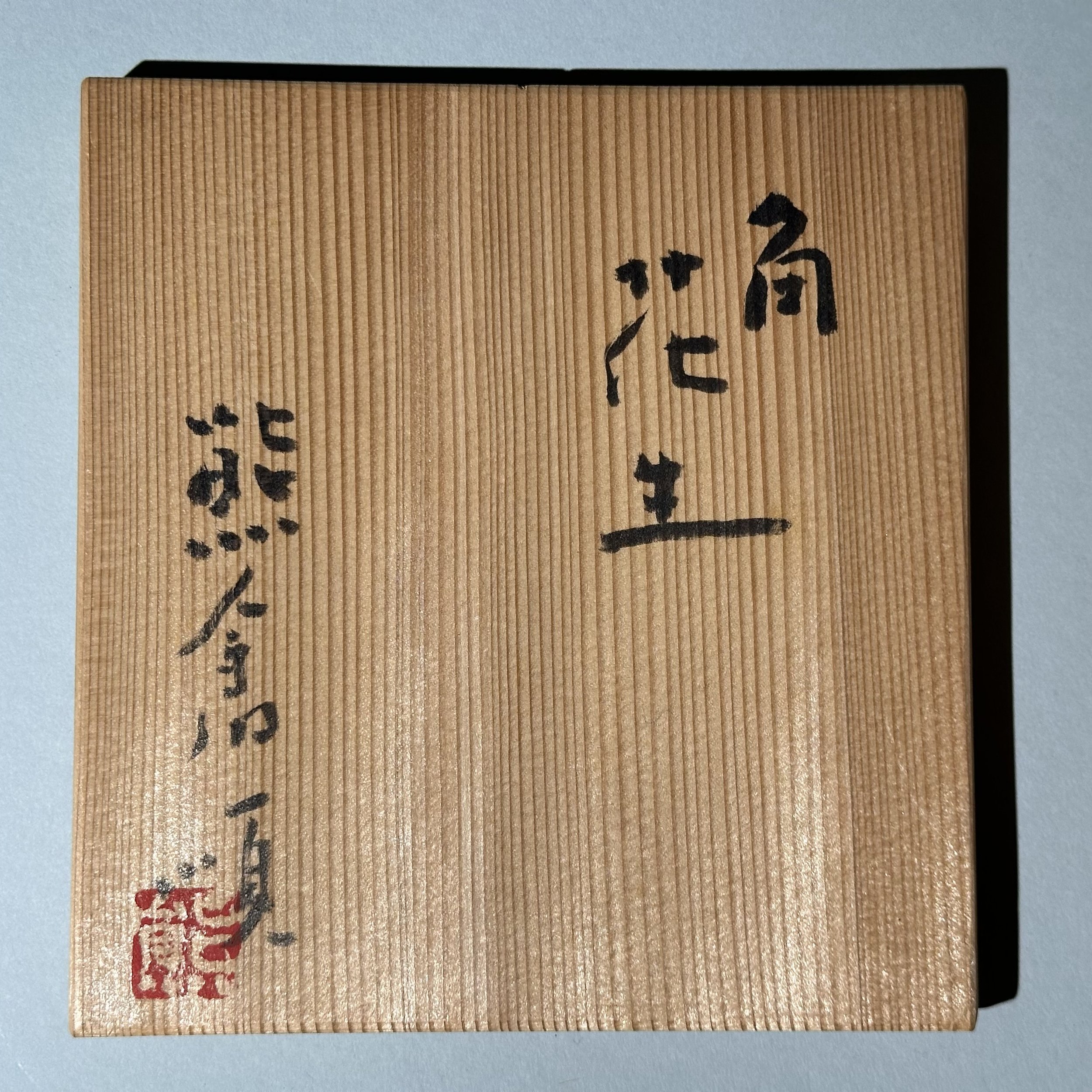 Image 9 of 10
Image 9 of 10

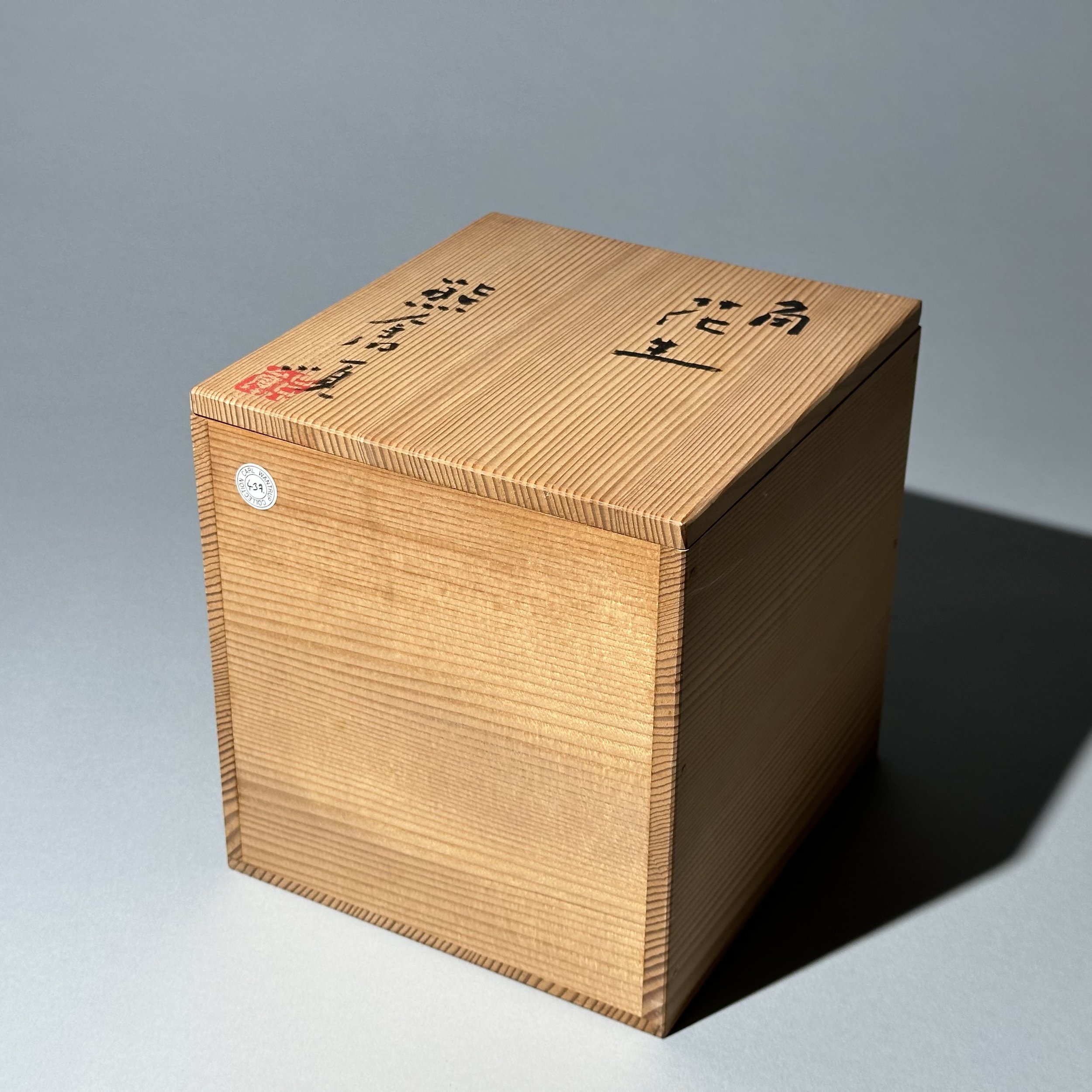 Image 10 of 10
Image 10 of 10











Sculptural ceramic by Kumakura Junkichi (1920-1985)
Japan, Kyoto
Showa Period (1926-1989), circa 1960s
Of cuboid form with cutout openings around the top rim, raised on four double feet, covered in a matt glaze with rust-brown colouring. Impressed mark to the base. 14.5cm high, 14.5cm wide. Together with its tomobako.
Cat. 437
Kumakura Junkichi (1920-1985)
Kumakura graduated from the Kyoto Institute of Technology in 1942 and then in 1946 became assistant to Tomimoto Kenkichi (1986-1963) who strongly influenced his approach towards ceramics as fine art. In 1955 he won the inaugural Japan Ceramics Association prize which cemented his reputation. In 1957 he joined Sodeisha and was to become a leading participant in that movement with his decidedly sculptural ceramics. Influenced by the notions of jazz music his work became more sculptural, often with overtones of eroticism and sexuality, as he got older. His success with the Japan Ceramics Society led to invitations to major international exhibitions where he was awarded the grand prize at the Brussels World Exposition in 1958 and the silver prize at the International Ceramics Exhibition in Prague in 1962.
Japan, Kyoto
Showa Period (1926-1989), circa 1960s
Of cuboid form with cutout openings around the top rim, raised on four double feet, covered in a matt glaze with rust-brown colouring. Impressed mark to the base. 14.5cm high, 14.5cm wide. Together with its tomobako.
Cat. 437
Kumakura Junkichi (1920-1985)
Kumakura graduated from the Kyoto Institute of Technology in 1942 and then in 1946 became assistant to Tomimoto Kenkichi (1986-1963) who strongly influenced his approach towards ceramics as fine art. In 1955 he won the inaugural Japan Ceramics Association prize which cemented his reputation. In 1957 he joined Sodeisha and was to become a leading participant in that movement with his decidedly sculptural ceramics. Influenced by the notions of jazz music his work became more sculptural, often with overtones of eroticism and sexuality, as he got older. His success with the Japan Ceramics Society led to invitations to major international exhibitions where he was awarded the grand prize at the Brussels World Exposition in 1958 and the silver prize at the International Ceramics Exhibition in Prague in 1962.
Japan, Kyoto
Showa Period (1926-1989), circa 1960s
Of cuboid form with cutout openings around the top rim, raised on four double feet, covered in a matt glaze with rust-brown colouring. Impressed mark to the base. 14.5cm high, 14.5cm wide. Together with its tomobako.
Cat. 437
Kumakura Junkichi (1920-1985)
Kumakura graduated from the Kyoto Institute of Technology in 1942 and then in 1946 became assistant to Tomimoto Kenkichi (1986-1963) who strongly influenced his approach towards ceramics as fine art. In 1955 he won the inaugural Japan Ceramics Association prize which cemented his reputation. In 1957 he joined Sodeisha and was to become a leading participant in that movement with his decidedly sculptural ceramics. Influenced by the notions of jazz music his work became more sculptural, often with overtones of eroticism and sexuality, as he got older. His success with the Japan Ceramics Society led to invitations to major international exhibitions where he was awarded the grand prize at the Brussels World Exposition in 1958 and the silver prize at the International Ceramics Exhibition in Prague in 1962.
